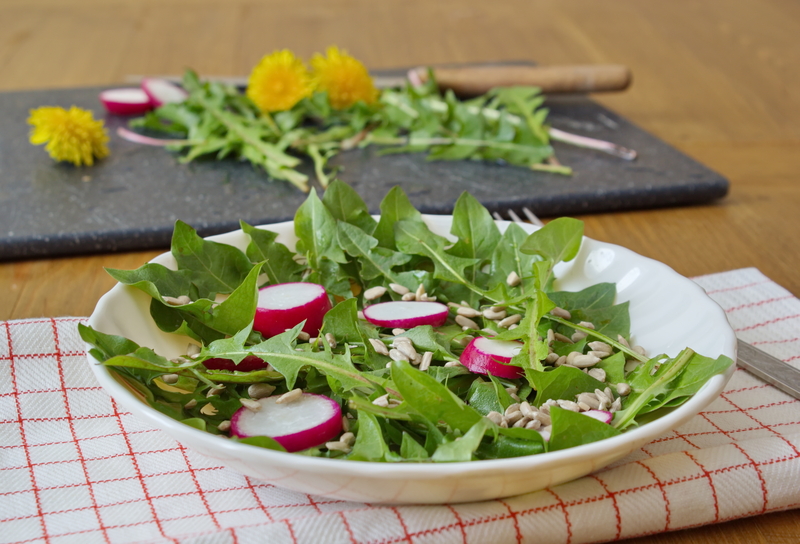9 Essential Tips to Simplify the Gardening Learning Curve
Posted on 26/09/2025
9 Essential Tips to Simplify the Gardening Learning Curve
Gardening is a wonderful hobby that brings beauty, joy, and fresh produce into your life. Yet for beginners, the gardening learning curve can seem intimidating. From selecting the right plants to troubleshooting pesky pests, understanding each step is key to becoming a confident gardener. Whether you have a small backyard or a sunny windowsill, these essential gardening tips will make your journey much smoother and rewarding.

Why Simplifying the Gardening Learning Curve Matters
Embarking on your first gardening adventure can feel overwhelming. There's a wealth of information out there, often filled with technical jargon and complex methods. Simplifying the gardening learning curve helps you focus on what matters most, avoids annoying pitfalls, and allows you to enjoy the experience. Let's explore nine actionable gardening tips for growth, success, and satisfaction.
1. Start Small and Grow Gradually
Embrace a Manageable Approach
- Choose a small area or a few pots to get started. You'll have less to manage, making it easier to keep up with watering and maintenance.
- Focus on learning the basics, like proper sunlight, watering, and soil.
- As your confidence grows, gradually expand your garden space or plant variety.
Many beginners get excited and take on too much at once. Starting small helps you master essential skills and celebrate early successes, building your enthusiasm for gardening.
2. Select the Right Plants for Your Location
Match Plants with Your Environment
- Learn your hardiness zone using the USDA Plant Hardiness Zone Map or regional equivalents. This determines what plants will thrive in your climate.
- Understand the available sunlight--full sun, partial shade, or full shade--and match your plants accordingly.
- Research low-maintenance varieties for beginners, such as marigolds, lettuce, or succulents.
Selecting plants suited to your area is a top tip to simplify the gardening learning curve. They'll require less care, and you'll avoid discouraging losses.
3. Invest in Quality Soil
The Foundation of Healthy Gardens
- Start with rich, well-draining soil. Don't skimp on this step, as healthy soil equals healthy plants.
- Test your soil's pH and nutrient levels using an at-home kit, then amend as necessary (add compost, manure, or organic fertilizers).
- Consider raised beds or high-quality potting mixes for containers--these make it easier to control soil quality and simplify your gardening learning curve.
Poor soil can be a major stumbling block for new gardeners. Quality soil is full of nutrients, supports good root growth, and helps prevent many problems right from the start.
4. Master the Art of Watering
Not Too Much, Not Too Little
- Check soil moisture by feeling the soil with your finger about 1-2 inches below the surface.
- Water your garden in the early morning or late afternoon to reduce evaporation and disease risk.
- Deep, infrequent watering helps plants develop strong roots and makes your watering routine simpler.
- Use mulch to retain moisture and cut down on watering frequency--a great tip for simplifying care.
Watering is often misunderstood and a frequent culprit for plant troubles. Learning a consistent, appropriate routine will take much of the guesswork out of your gardening journey.
5. Learn About Pests and Diseases Early
Prevention is Simpler Than Cure
- Identify common pests and diseases in your region. Quick identification leads to quicker action.
- Promote healthy plants with good air circulation, proper spacing, and minimal stress.
- Adopt organic pest control strategies like hand-picking, using neem oil, or introducing beneficial insects (ladybugs, lacewings).
- Don't panic--most gardens have a few bugs, and only major infestations require serious intervention.
Understanding what's normal and what's not will help you spend less time worrying and more time enjoying your garden. This tip is crucial to flatten the gardening learning curve.
6. Keep Reliable Garden Records
Track Your Progress and Successes
- Use a gardening journal or digital app to record what you plant, when, and where.
- Take notes on planting dates, varieties, weather patterns, and garden outcomes.
- Photos are invaluable--snap "before and after" shots to track your garden's transformation.
- Review notes at the end of the season; this helps identify successes and areas for improvement.
Documenting your gardening journey provides valuable insights and rewards you with a sense of accomplishment. This organizational habit truly simplifies your learning curve in gardening.
7. Educate Yourself with Trusted Resources
Foster Continuous Learning
- Read gardening books and reputable websites (university extensions, botanical gardens).
- Join gardening clubs or online forums to ask questions and exchange tips with other enthusiasts.
- Attend local workshops or volunteer at community gardens for practical experience.
With so much information online, it can be hard to know what's accurate. By relying on trusted sources, you'll learn effective, region-specific gardening practices without misinformation.
8. Practice Patience and Experimentation
Gardening is a Journey, Not a Race
- Accept that not every plant will thrive--even the best gardeners have setbacks.
- View failures as opportunities for learning rather than disappointment.
- Experiment with new plant types, layouts, and techniques--that's how your gardening skills blossom!
- Practice patience; gardening rewards consistency and care over time, not overnight success.
Understanding that mistakes are part of the gardening learning curve takes the pressure off and enhances your enjoyment of this fulfilling hobby.
9. Connect with Your Garden Regularly
Stay in Tune with Growth and Change
- Visit your garden daily, even if it's just for a few minutes. Regular observation helps spot issues early and deepen your connection with nature.
- Weed, prune, and harvest frequently--these small tasks keep your space thriving and prevent problems from getting out of hand.
- Celebrate small victories, like your first sprouting seedling or harvest. Motivation is key to making gardening a lifelong passion.
Daily interaction builds your confidence, strengthens your observational skills, and amplifies enjoyment--making all the difference in simplifying your gardening journey.
Extra Tips to Streamline Your Gardening Experience
- Invest in ergonomic, high-quality tools--they make tasks easier and prevent injury.
- Garden with friends or family to exchange ideas and share the workload.
- Embrace eco-friendly practices like composting or collecting rainwater to make gardening more sustainable with less effort.
- Don't overlook labeling your plants! It avoids confusion, especially when growing several varieties.
Common Gardening Mistakes to Avoid
- Overwatering or underwatering plants instead of tailoring the amount to plant needs and soil type.
- Ignoring your soil's health--plants grow best when the ground provides proper nutrients and good structure.
- Planting at the wrong time of year or outside your hardiness zone.
- Neglecting regular maintenance and observation, which may allow small problems to become big ones.
- Giving up after initial setbacks. Remember, all great gardeners started as beginners!
Frequently Asked Questions When Starting Your Gardening Journey
Q1: How much time does a beginner gardener need to invest every week?
A: For a small vegetable patch or flower bed, start with 15-30 minutes a few times a week. As you become more comfortable and expand, you can increase your commitment, but even busy people can succeed with container gardening and low-maintenance plants.
Q2: What are the best plants for beginners?
A: Easy plants for new gardeners include lettuce, radishes, zinnias, sunflowers, marigolds, herbs (basil, mint, chives), and succulents. These are hardy and forgiving, making them ideal for learning basic care.
Q3: How do I figure out what type of soil I have?
A: Perform a simple jar test at home or purchase a soil test kit from a garden center. Knowing if you have clay, sandy, or loamy soil will help you adapt your watering and choice of plants.
Q4: What if I don't have a yard?
A: Container gardening works wonderfully on balconies, patios, or even sunny windowsills. Use quality potting mix and ensure your containers have drainage holes.

Conclusion: Embrace the Simplicity and Joy of Gardening
Gardening doesn't have to be complicated or intimidating. By following these 9 essential tips to simplify the gardening learning curve, you'll grow your confidence and your plants at the same time. Remember to start small, choose the right varieties, nurture your soil, and embrace each discovery along the way. With each season, your skills--and your green space--will flourish. So, dig in, enjoy the process, and watch your gardening journey bloom!
Ready to Simplify Your Gardening Learning Curve?
Apply these tried-and-true strategies today, and you'll soon find that gardening isn't just manageable--it's a joy. For more gardening resources, tips, and inspiration, explore our other guides and join our gardening community!

